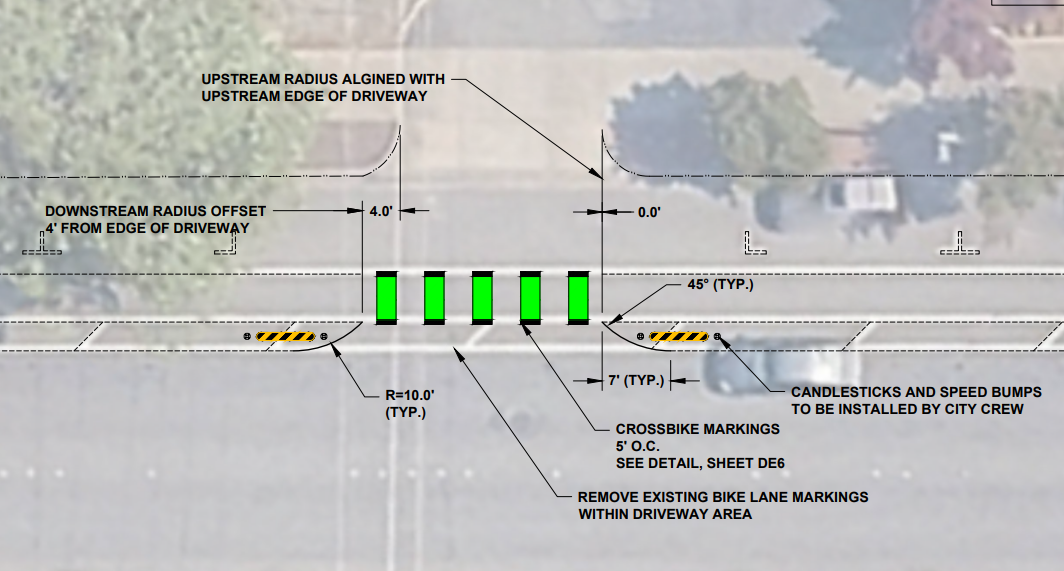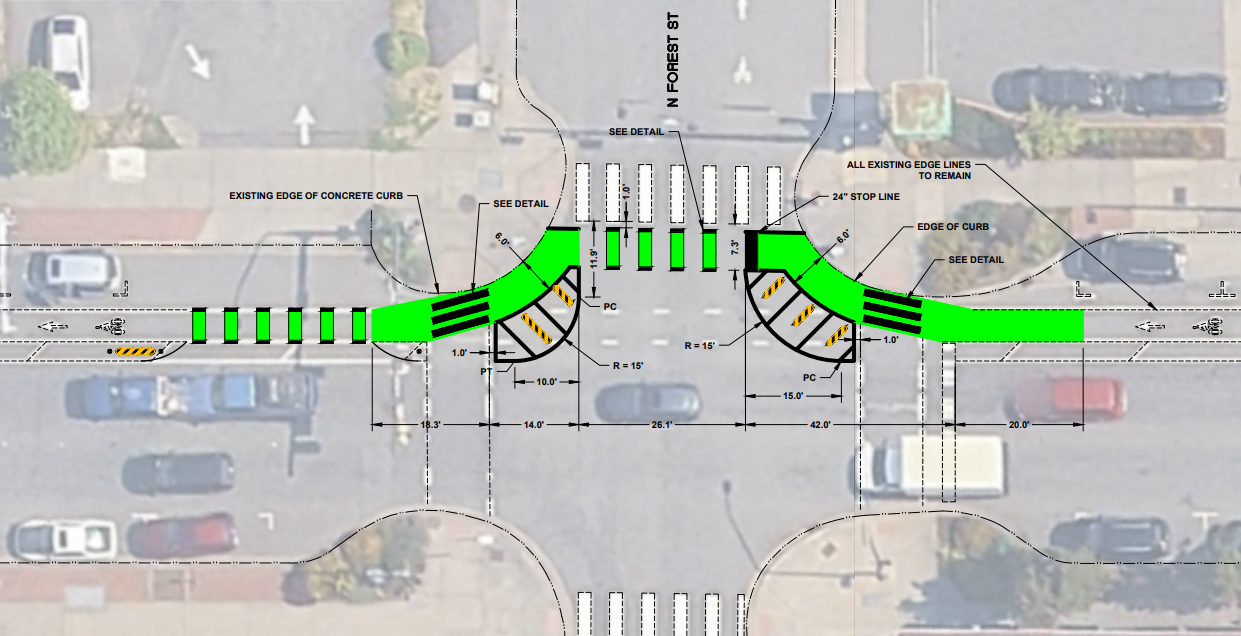In May 2024, the City of Bellingham piloted a new bike lane on Holly Street from Ellis to Bay Street to improve safety, mobility, and accessibility for cyclists and pedestrians. This project helped advance key goals outlined in Bellingham’s 2024 Bicycle Master Plan, as well as the City’s Local Road Safety Plan, to enhance pedestrian safety and comfort in the downtown area. Additionally, the project aligns with Bellingham’s Complete Networks Ordinance, which prioritizes the safety and accessibility of the most vulnerable users in the city’s multimodal transportation system.
2025 Project Updates
Throughout the Pilot, we collected extensive community feedback, which helped guide several improvements that have been implemented since the Pilot project began. For details regarding the pilot project results, community feedback, data collection, and analysis, you can review the Holly Street Bike Lane Before & After Study Report, which Public Works presented to the Bellingham City Council on January 27, 2025.
Community input and pilot project results will inform the development of a final design for the Holly Street Corridor, from Broadway to Ellis Street. To learn more about the upcoming corridor project, design process, and how you can provide input, visit our Final Design – Holly Street Corridor (Broadway to Ellis) project page.
Summer 2025 – Last Round of Pilot Modifications
In July 2025, the City of Bellingham will implemented the last improvements as part of the Pilot Project to enhance cyclist visibility, reduce right-turn conflicts, and encourage safer speeds through intersections. These changes respond to community feedback and concerns we heard during the initial phase of this project.
Important changes included replacing parking-protected bike lanes between North State Street and Bay Street with standard buffered bike lanes —similar to those commonly seen throughout Bellingham — and installing safety enhancements at high-traffic intersections to improve visibility and facilitate safer pedestrian and bicycle crossings. See below for project details.
Project Contact
General project questions: AskPW@cob.org
Media inquiries: pwmedia@cob.org
Project Engineer:
Shane Sullivan, PE, PTOE
Phone: (360) 778-7877
Email: spsullivan@cob.org




